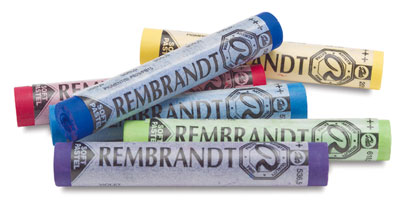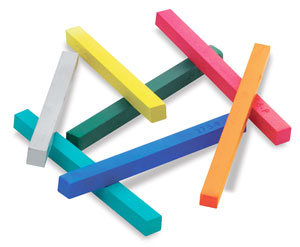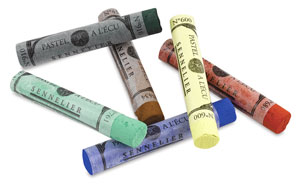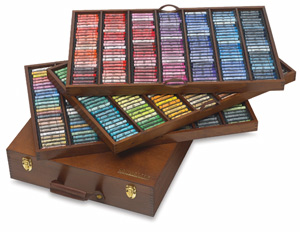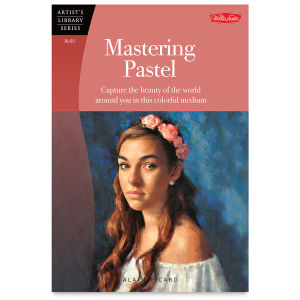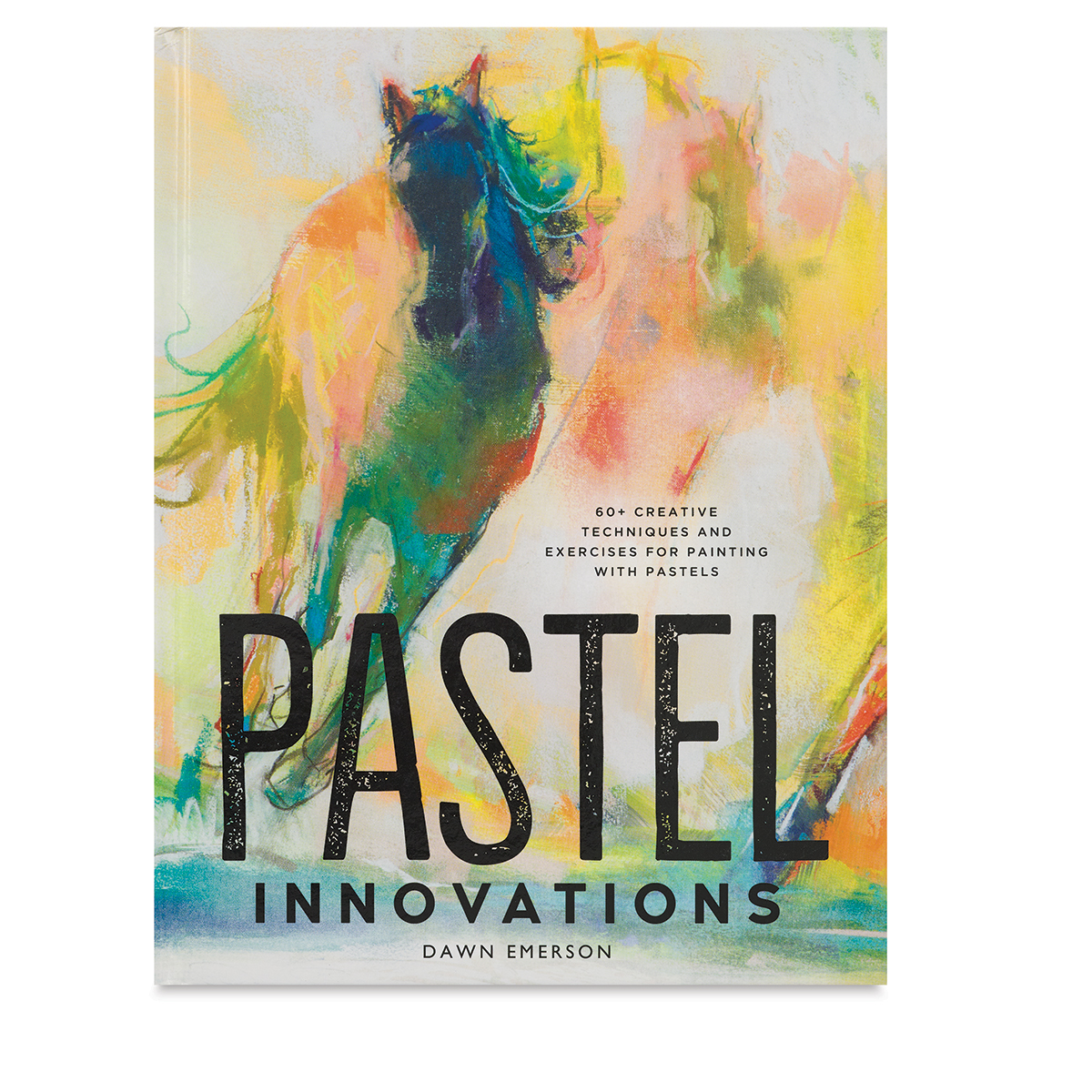Pastel Drawings and Paintings
Pastel drawings and paintings glow with an intensely luminous color and rich velvety texture. This is because pastel powder is pure pigment!
The Recommended Products below are there to help you browse for art supplies, and if you make a purchase I get a small commission that supports this site and keeps it FREE! Thanks in advance.
Sennelier Soft Pastel
Pastel is a medium that straddles the line between painting and drawing. The finished pieces can look just as luscious and luminescent as paintings, yet the process to create them resembles drawing more than painting.
Table of Contents
Overview of pastels: Start here with a quick overview of what pastels are and why artists like them. Learn about the characteristics of pastels.
Pastel paintings or pastel drawings: What's the difference? Find out here.
Pros and cons of using pastels: Although lots of artists love pastels, there are some safety concerns you should be aware of when you use them. Read about the pros and cons of using pastels to decide if they are a medium you'd like to try.
Pastel Supplies: Learn all about the supplies you need to make art with pastels in the following pages:
Pastels: Before buying pastels, get an in-depth look at the different attributes of pastels, such as composition, color, quality and type - plus suggestions on what to buy.
Surfaces for pastels: Learn what types of surfaces can accept pastels and why other surfaces aren't suitable, with lots of links to buy.
Accessories for pastels: Find out what extra supplies you can use with pastels, such as fixatives, blenders, sharpeners and more.
Sidewalk chalk drawings are large outdoor paintings created using professional-quality pastels. Learn about the history of pavement art and discover some of the world's best chalk artists!
Tutorial: How to use pastels Learn basic pastel techniques for creating different effects in this fun pastel portrait tutorial.
Tutorial: How to make your own soft pastels from scratch When you make your own pastels, you can control factors such as size and color. Check out this tutorial to find out how its done!
Frequently Asked Questions: Browse the questions (and answers) of other readers and gather tips for pastel painting and drawing!
Characteristics of Pastels
A pastel consists of pure powdered pigment and binder in a stick. It's basically the same pigment that is used in all art mediums. In appearance, it's sort of a cross between a stick of chalk and a crayon. They are held in the same way that you would hold a pencil, crayon or paint brush. Pastels come in 4 forms: hard pastels, soft pastels, pastel pencils, and oil pastels (these link to Blick Art Materials, and if you make a purchase I get a small commission that helps support this site). The hardness or softness of a pastel is determined by the amount of binder in the stick. Soft pastels have less binder and more pigment. They normally have a rounded shape. Hard pastels are usually rectangular and have more binder to keep the stick together. Each has different qualities and creates different effects. For example, soft pastels are easy to smudge and blend, whereas hard pastels are good for creating tight, precise details. Pastel pencils are pastels that are encased in wood, allowing for less mess and more control over details. They can be easily blended with regular hard or soft pastels. Oil pastels are great for creating painterly effects, but their wax binder means they're incompatible with other pastel types.
To make a pastel painting or drawing, the stick is dragged across a rough or toothy surface. It's essential that the surface have some degree of abrasion, so that the pastel particles can rest on the paper. Smooth surfaces are too slick to accept pastel. Pastels are easily blendable, and can be blended with fingers, a blending stump, or a cloth. Unlike the process of painting, the colors are mixed directly on the paper, rather than on the palette. This is why blending is so important!
When handled correctly, pastels are permanent and can last just as long as any other medium. Pastels never crack, yellow or darken over time. When properly framed and securely hung, the particles will stay fixed in place for centuries.
Pastel paintings refer to completed works in which the entire surface area is covered in pastel. Because of pastel's exquisite blendability, combined with their luscious texture, finished artworks often emanate the same depth and richness as paintings. Pastel drawings describe works in which the entire surface area is not covered in pastel. Instead, there is a noticeable amount of paper or underlying surface showing through. These works have much more in common with drawings or sketches.
Working with pastels is not quite as straightforward as the other mediums we're exploring on this website. Using them is easy enough, but there are several pros and cons which need to be considered when deciding whether to work with pastels, especially in terms of health precautions. Before we get into that, here's a quick overview of the basic characteristics of pastels.
pros and cons of using pastels
There are many reasons to work with pastels, because they are gratifying in lots of ways. With pastels, you can achieve a wonderfully luscious, velvety texture. The deep, rich colors are easy to blend and when used well, they can have a splendid luminosity. Another advantage is that you don't need a lot of tools to work with pastels, as you would with paints.
If you make a purchase via the links below I receive a small commission, which helps support this site.
The cons for working with pastels are mainly related to the fact that the pastel particles are never fixed or set in place. The biggest concern is the inhalation of pastel dust. As you rub the pastels onto the surface, inevitably tiny pastel "dust" particles will float into the air. Therefore you must use pastels with proper ventilation - you might even want to wear a face mask or use an air purifier. Inhaled pastel particles can cause serious health problems.
Because pastels are not permanently fixed to the surface of the paper, they must be handled extremely carefully. Pastel art can be accidentally smudged all too easily. In addition, they can be quite messy on your fingers, hands, clothes, and work area. Pastel art cannot be properly "fixed" with a fixative spray without dulling and darkening the color, so it is advised to use the fixative sparingly, if at all. Most fixatives are toxic, so they must be used with proper ventilation. In order to ensure their longevity, pastels must be framed securely under glass.
These are all important points to consider when deciding whether or not to work in pastels. While the end result can be stunningly beautiful, it does take awareness and care to both safely create and safely store a pastel work of art.
oil pastels
Oil pastels are another type of pastel that contain pigment with a wax binder and a non-drying oil. The waxiness of oil pastels is similar to the waxy quality of crayons, only more sophisticated! To learn more about techniques for oil pastels as a fine art medium, visit the website of oil pastel artist Robert Sloan.
When you purchase one of our recommended products you're helping to support this site! Thanks in advance.

